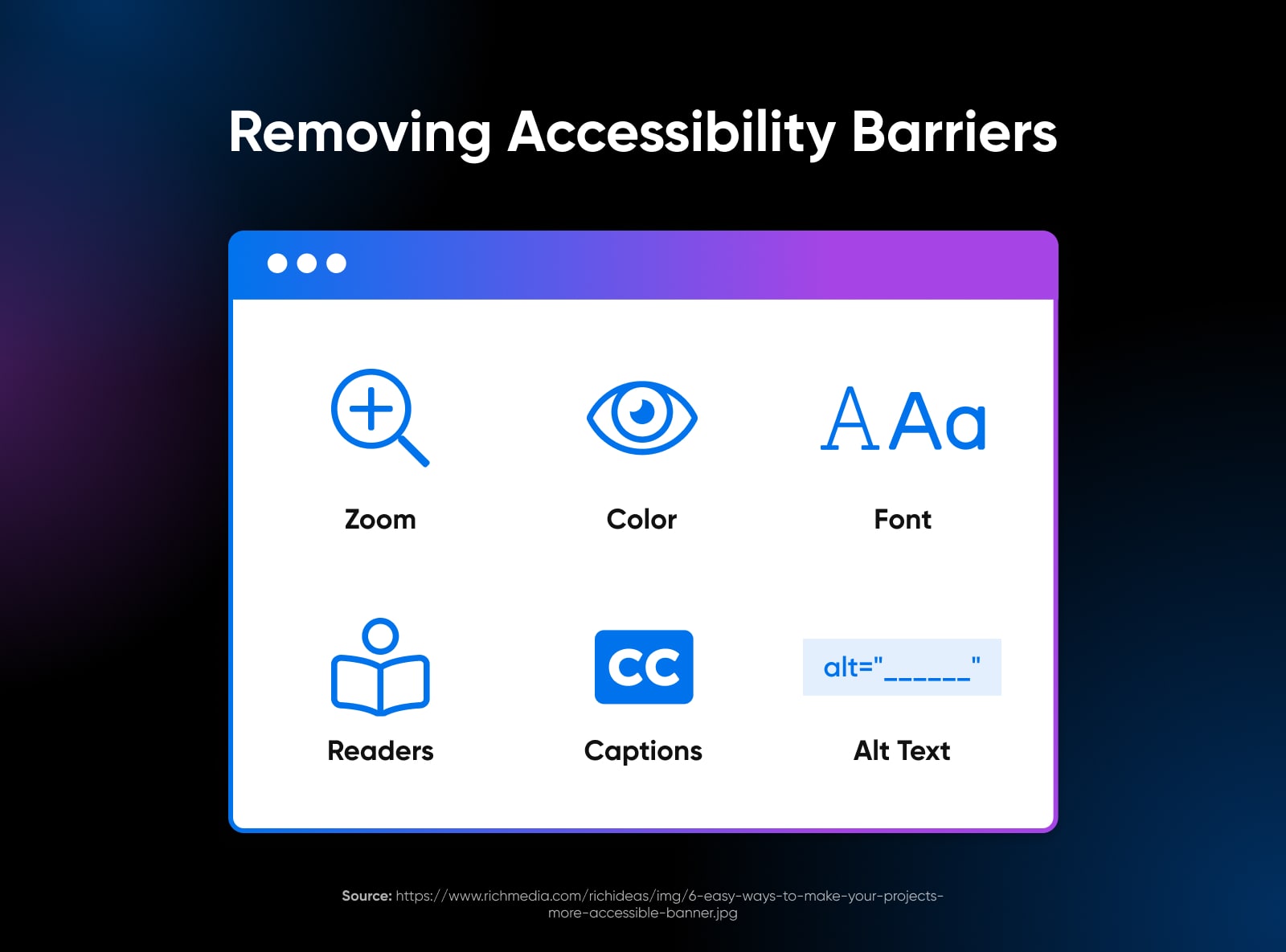3D Printing Mastery – Unleash Your Creativity
Discover the art and science of 3D printing with tips, tutorials, and innovative designs.
Web Accessibility: Making the Internet Less Exclusive
Unlock the web for everyone! Discover how to make your website accessible and inclusive in our latest blog on web accessibility.
Understanding Web Accessibility: Key Principles and Practices
Understanding Web Accessibility is essential in creating an inclusive digital environment. It refers to the practice of ensuring that websites, tools, and technologies are designed and developed so that people with disabilities can use them. The key principles of accessibility are rooted in the Web Content Accessibility Guidelines (WCAG), which provide a detailed framework for improving web content. These principles are organized around four main criteria: Percievable, Operable, Understandable, and Robust. By following these guidelines, developers can create a more equitable online experience for all users, regardless of their physical or cognitive abilities.
Implementing effective web accessibility practices involves several strategies. First, ensuring that all images have alternative text allows screen readers to describe visual content to users. Second, utilizing proper heading structures and clear navigation helps users understand and interact with the site more easily. Additionally, it is crucial to provide captions for multimedia content and ensure that all interactive elements are keyboard accessible. By prioritizing accessibility, web developers not only adhere to legal standards but also expand their audience reach and enhance overall user experience.

Common Barriers to Web Accessibility and How to Overcome Them
Web accessibility is crucial for creating inclusive digital experiences, yet numerous barriers prevent many users from fully engaging with online content. Common issues include poor website design, inadequate text alternatives for images, and complex navigation structures that can frustrate users with disabilities. Additionally, a lack of awareness and understanding of web accessibility standards leads many developers to overlook these vital elements, further compounding the problem. Addressing these barriers requires a commitment to prioritizing accessibility from the ground up.
To overcome these challenges, organizations can implement various strategies. First, conducting accessibility audits using tools like screen readers can help identify existing obstacles. Second, offering training for developers and content creators about the importance of web accessibility ensures that everyone is on the same page. Finally, adopting a user-centered design approach, which includes input from individuals with disabilities, can lead to more intuitive layouts and navigational structures that are easy for all users to understand. By taking these steps, we can make the web a more accessible place for everyone.
Why Accessible Websites Benefit Everyone: A Comprehensive Guide
Accessible websites are designed to be usable for everyone, including individuals with disabilities. When websites prioritize accessibility, they create a more inclusive online environment. This is not just about legal compliance; it's about enhancing user experience for all visitors. Features such as text alternatives for images, keyboard navigation, and properly structured content can significantly improve navigation. According to studies, websites that prioritize accessibility can also reduce bounce rates and improve engagement, meaning that the benefits extend beyond just compliance to actually enhancing the overall user experience.
Moreover, accessible websites are optimized for a broader audience, including aging users and those using various devices or assistive technologies. By implementing accessibility standards, you are making your content more discoverable and usable by search engines, which can positively affect your SEO rankings. This means that even if a user does not have a disability, they can still benefit from a site that is easy to navigate and understand. In conclusion, embracing web accessibility is not just a legal obligation but a strategic advantage that enhances usability and promotes a more inclusive digital community.